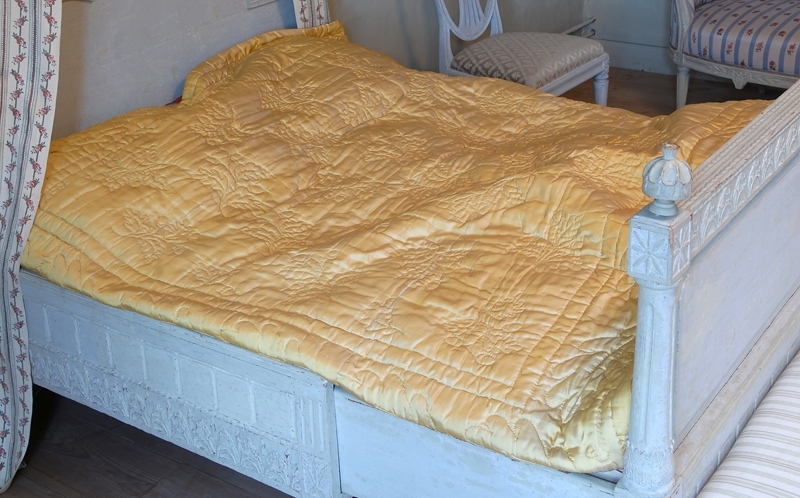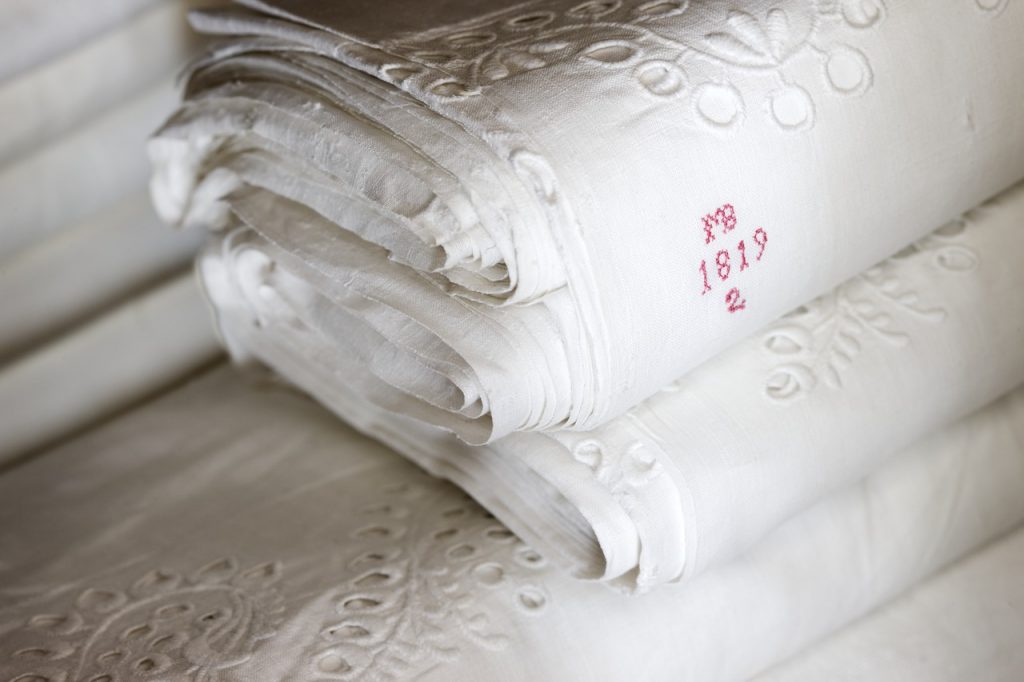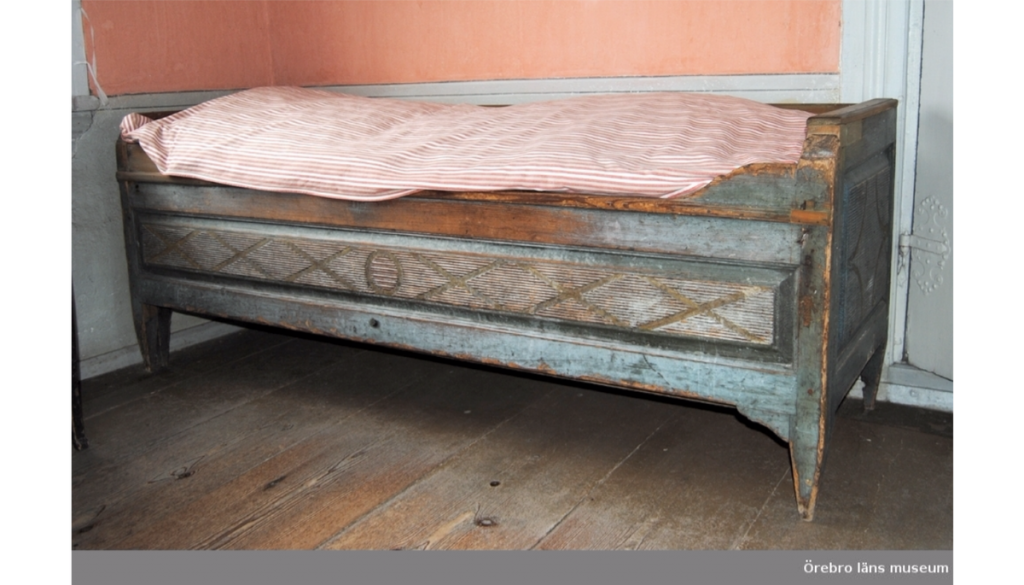
Under ett par sommarveckor har jag skrivit av brev från Augustas mamma till Augusta under tiden 1852-1853, när Augusta bodde i Stockholm för att få behandling för sin TBC. Augusta var nu förlovad med Adolf Nordwall men mamma Anna ifrågasatte det stundande bröllopet. Skulle verkligen Augustas hälsa klara av ett bröllop.
I breven försöker hon övertala Augusta att skjuta upp bröllopet ett år.
”Malmsten hade sakt åt svåger att det vore ett stort oförnuft att låta dig i år gifta dig, äfven lär doktorerna her säga att det vore din död.” (Professor Malmsten var Augustas läkare i Stockholm.)
”Det är förlidsamt med en envishet att villa gifta er i höst. Om du då är som nu, ett stackars skrälle, så är ju det ett verkligt spektakel att gifta en sådan och huru kan Adolf vilja det som skall vara en förståndig man, jag begriper det ej.”
Brudutstyrseln tar form
Samtidigt handlar breven om det stora arbetet med att iordningställa Augustas brudutstyrsel. Och då talar vi om att utrusta en gård med allt vad textilier innebär. Sängkläder, lakan, handdukar, dukar, servetter…. Och det för både familj och tjänstefolk. Och det handlade om hela tillverkningsprocessen. Tyg skulle vävas, blekas, sys, stoppas… Det tog tid och uppehöll många av gårdens kvinnor och även väverskor och sömmerskor i ”stan”. Genom breven får jag följa tillverkningsprocessen, en fantastisk beskrivning av kvinnohantverk! Hösten 1852 börjar korrespondensen. Den 16 november skriver Anna:
”Denna vecka är din servettdräll färdig och i lördags köpte jag garn till en 3 1/2 dussin servetter och 3 dukar väftergarn köpte jag till, det bli ett fint duktyg och ett mycket vackert mönster, de skall sätta upp det i nästa vecka. Då det blir färdigt skall jag låta väfva 6 stycken The dukar 2 alnar breda och långa, sedan är du väl i fina duktyger, vi hinna nog i sommar att väfva flere saker ty du får ej gifta dig så brått.”

Så fortsätter rapporteringen under vintern och framåt våren handlar breven om det vi på IKEA kallar bäddtextil. Tänk så mycket enklare och snabbare det går idag att utrusta ett hem! Men nog var allt vackrare på Augustas tid, handvävt och broderat. Och man förvaltade sina textilier väl och när de var utnötta, vände man på lakanen och sydde ihop dem på nytt. Och till slut vävde man trasmattor av de utslitna tygerna.

”Vi, Branta och jag, hålla nu på att stoppa dina täcken. Det blir 4 enmanstäcken och två åt folket. Lina syr på dina vardagslakarn och Malla gör ej annat än stryker. Väfvar Madam har nu varit her och tagit till ett groft bolster åt dina pigor samt åt madrasser i dina gästsängar. Drällarna är nästan blekta. De ha legat på snön. På lärftslakarn är jag dålig. Jag har ännu ej mer än 4 par. Jag har tänkt ta 100 alnar lärft hos Söderholm. Han har fått sin fjolräkning betalt fast jag ej varit inne. Rättar Madam har till pigornas sängar lakarn att väfva så att det blir 8 par som väl går an att börja med dina vardagslakarn blir 12 par med örngottsvar. Jag har köpt 1 LB (skålpund) dun. Den var dyr den kostade 55 Rdr. Huru vi skall få ny fjäder vet jag ej om ej Adolf genom bekant kan skaffa om kring Vadstena som är Gåsbygden.”
Vilka mängder av textil allt handlade om! Men tvättade man lakan två gånger om året behövdes ett stort linneförråd.
Så i kanten av ett brev hittar jag en kort notering:
”Brudtäcket stickas nu av rosenrött sidengarn.”
Det blev bröllop, i augusti.
Bilder:
Brudtäcke Västergötlands museum
Bolstervar Örebro läns museum


